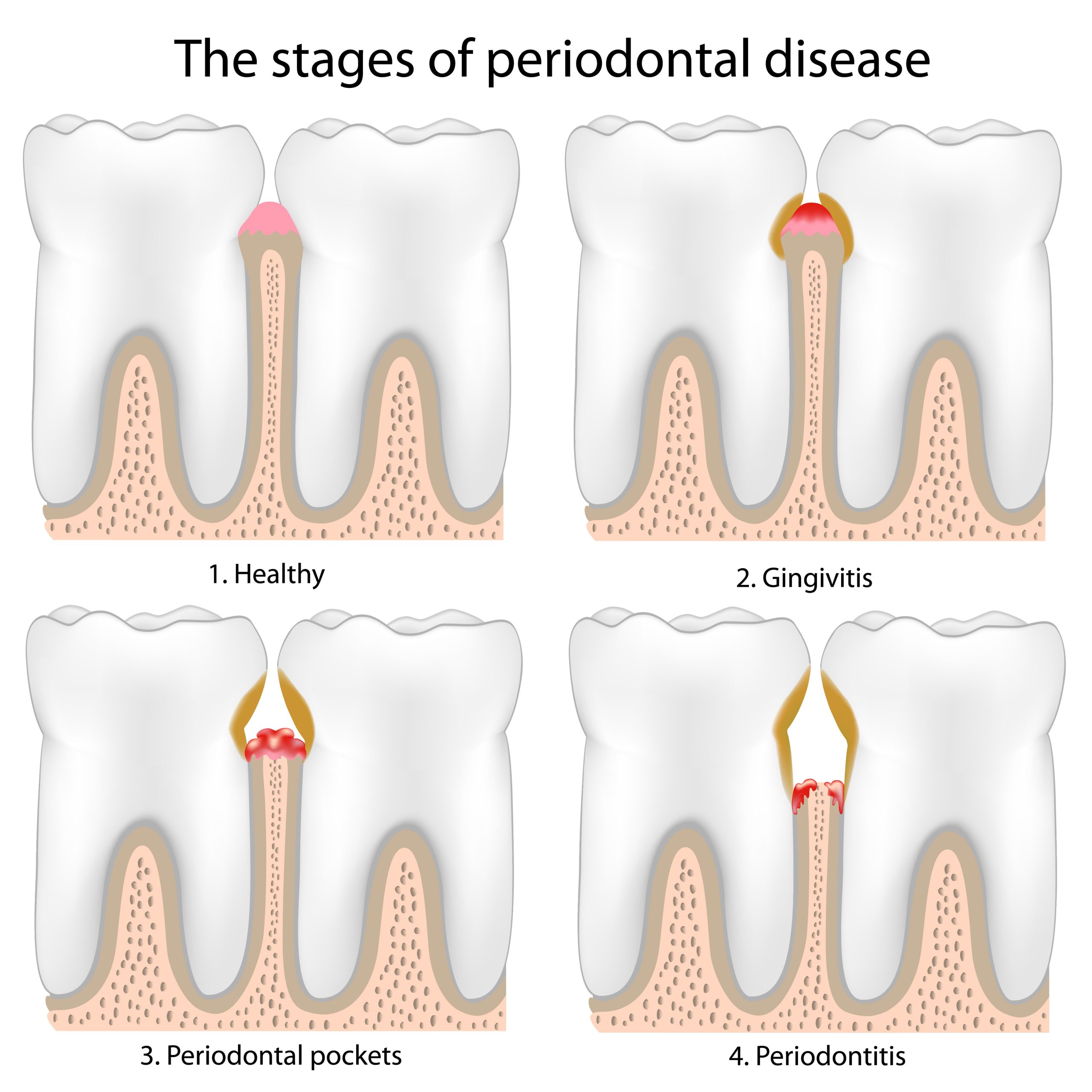Introduction
Gum problems are a common oral health issue that many people experience at some point in their lives. Two of the most common gum problems are gingivitis and periodontitis. While they may sound similar, there are important differences between the two conditions. Understanding these differences is crucial for proper recognition and treatment. In this blog post, we will explore the characteristics of gingivitis and periodontitis, as well as discuss effective treatment options.
Understanding Gingivitis
Gingivitis is the initial stage of gum disease, characterized by inflammation of the gums. It is primarily caused by poor oral hygiene, leading to the buildup of plaque and bacteria along the gumline. Common symptoms of gingivitis include red, swollen, and tender gums, as well as bleeding during brushing or flossing.
The Importance of Early Detection

Early detection of gingivitis is crucial to prevent it from progressing into a more severe form of gum disease. Regular dental check-ups and maintaining good oral hygiene practices are essential for identifying and treating gingivitis in its early stages.
Recognizing Periodontitis
Periodontitis is an advanced stage of gum disease that occurs when gingivitis is left untreated. It involves the inflammation and infection of the structures supporting the teeth, including the gums, periodontal ligament, and alveolar bone. As periodontitis progresses, it can lead to tooth loss and other serious oral health complications.
Signs and Symptoms of Periodontitis
Periodontitis is characterized by symptoms such as persistent bad breath, receding gums, loose teeth, and the formation of deep pockets between the gums and teeth. Additionally, individuals with periodontitis may experience pain while chewing and increased tooth sensitivity.
Treating Gingivitis
The treatment of gingivitis focuses on eliminating the underlying cause, which is the buildup of plaque and bacteria. This can be achieved through regular brushing and flossing, as well as professional dental cleanings. In some cases, a dentist may recommend antimicrobial mouth rinses or antibiotics to control the infection.
Preventing Gingivitis
Preventing gingivitis involves maintaining good oral hygiene practices. This includes brushing your teeth at least twice a day with a fluoride toothpaste, flossing daily, and using an antimicrobial mouthwash. Regular dental check-ups are also essential for early detection and treatment of gingivitis.
Treating Periodontitis
The treatment of periodontitis is more complex and may require a combination of non-surgical and surgical interventions.
Summary
Gingivitis and periodontitis are both gum problems, but they differ in severity and progression. Gingivitis is the milder form and refers to inflammation of the gums caused by plaque buildup. It is characterized by red, swollen, and bleeding gums. If left untreated, gingivitis can progress into periodontitis, a more severe condition that affects the supporting structures of the teeth, including the gums, bone, and ligaments. Periodontitis can lead to tooth loss if not properly managed.
Recognizing the signs and symptoms of gum problems is essential for early intervention. Regular dental check-ups and maintaining good oral hygiene practices, such as brushing and flossing, can help prevent gum problems from developing or progressing. If gingivitis is detected, it can usually be reversed with professional dental cleanings and improved oral hygiene. However, periodontitis may require more extensive treatment, including deep cleaning procedures, antibiotics, and in severe cases, surgery.
By understanding the differences between gingivitis and periodontitis, individuals can take proactive steps to maintain their gum health. It is important to consult with a dental professional for an accurate diagnosis and personalized treatment plan. With pro per care and regular dental visits, gum problems can be effectively managed, promoting overall oral health and preventing potential complications.
- Q: What is gingivitis?
- A: Gingivitis is the inflammation of the gums caused by plaque buildup. It is the earliest stage of gum disease.
- Q: What are the symptoms of gingivitis?
- A: Symptoms of gingivitis include red, swollen, and tender gums, bleeding while brushing or flossing, and bad breath.
- Q: How is gingivitis treated?
- A: Gingivitis can be treated by practicing good oral hygiene, such as regular brushing and flossing, and getting professional dental cleanings.
- Q: What is periodontitis?
- A: Periodontitis is an advanced stage of gum disease where the infection has spread to the supporting structures of the teeth, including the bone.
- Q: What are the symptoms of periodontitis?
- A: Symptoms of periodontitis include all the symptoms of gingivitis, along with receding gums, loose teeth, and changes in bite or tooth alignment.
- Q: How is periodontitis treated?
- A: Treatment for periodontitis may involve deep cleaning procedures like scaling and root planing, medication, and in severe cases, surgery.

Welcome to my website! I’m Timothy Martens, a dedicated and experienced Periodontist specializing in dental braces, gum disease treatment, dental scaling, and toothpaste recommendations. With a passion for oral health and a commitment to providing exceptional care, I strive to help my patients achieve healthy and beautiful smiles.
